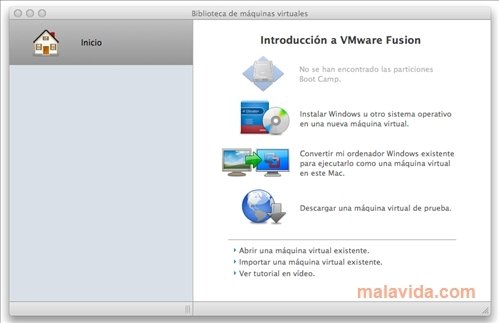
- Windows 10 vmware fusion install#
- Windows 10 vmware fusion drivers#
- Windows 10 vmware fusion driver#
- Windows 10 vmware fusion full#
Windows operating systems are available separately from Microsoft and other retailers.

Windows 10 vmware fusion install#
Windows 10 vmware fusion full#
I was happy to be able to use some resolutions that matched my MacBook Pro display, or larger 24” monitor, especially when going into full screen mode. Without having the SVGA driver, you won’t get the added bonus of “dynamically resizing” your desktop window and having the resolution auto adjust. I still need all the other benefits (like copying files between VM and Desktop) that VMWare Tools provides. After a system reboot I reinstalled VMWare Tools, but I used the “custom” option and omitted installing the video driver.
Windows 10 vmware fusion driver#
So I simply uninstalled VMWare Tools, which removed the video driver and restored the default one.
Windows 10 vmware fusion drivers#
The build in display drivers that are coming in the technical previews work just fine and provide the higher resolutions you need. The trick is to simply not use the VMWare Fusion video driver at all. After a little tweaking and testing, I’ve found a trick that works. Unfortunately the typical “dynamic sizing” video behavior isn’t working and going to full screen mode doesn’t help either. I’ve been experiencing Windows 10 using VMWare Fusion. With the new Windows 10 Enterprise multi-session capability exclusive to Windows Virtual Desktop and Remote.

It is also great for occasional-use scenarios such as testing and preparing code to run on newer platforms.

Use the links below to start your free, fully functional 30-day trial, no registration required, or. Fusion 13 supports Intel and Apple Silicon Macs running macOS 12 and newer, and includes features for developers, IT admins and everyday users. The version of DirectX supported by your hardware version is displayed. Due to its perpetual licensing model, VMware Fusion is a great option for users whose needs do not change as much over time. VMware Fusion delivers the best way to run Windows, Linux and more on Apple Macs without rebooting. VMware Fusion is an easy-to-use application that gives you the possibility to set up and use a virtual machine of the Windows operating system on your. Select the Accelerate 3D graphics check box. Under System Settings in the Settings window, click Display. I’m also quite giddy for the day I can say “Hey Cortana! Open Visual Studio” and BAM there it is. Select a virtual machine in the Virtual Machine Library window and click Settings. Launch VMware Fusion From the VMware Fusion top menu bar click on File > New > Click on Create Custom Virtual Machine. I think they’ve done a fabulous job at bridging the gap between the “traditional desktop” and the “metro interface” (the “convergence” thing). I’ve really been enjoying Windows 10, even while in the Technical Preview mode.


 0 kommentar(er)
0 kommentar(er)
